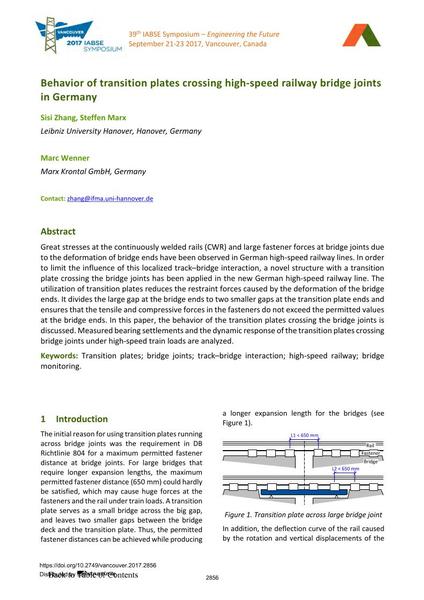Behavior of transition plates crossing high-speed railway bridge joints in Germany

|
|
|||||||||||
Détails bibliographiques
| Auteur(s): |
Sisi Zhang
(Leibniz University Hanover, Hanover, Germany)
Steffen Marx (Leibniz University Hanover, Hanover, Germany) Marc Wenner (Marx Krontal GmbH, Germany) |
||||
|---|---|---|---|---|---|
| Médium: | papier de conférence | ||||
| Langue(s): | anglais | ||||
| Conférence: | IABSE Symposium: Engineering the Future, Vancouver, Canada, 21-23 September 2017 | ||||
| Publié dans: | IABSE Symposium Vancouver 2017 | ||||
|
|||||
| Page(s): | 2856-2863 | ||||
| Nombre total de pages (du PDF): | 8 | ||||
| Année: | 2017 | ||||
| DOI: | 10.2749/vancouver.2017.2856 | ||||
| Abstrait: |
Great stresses at the continuously welded rails (CWR) and large fastener forces at bridge joints due to the deformation of bridge ends have been observed in German high-speed railway lines. In order to limit the influence of this localized track–bridge interaction, a novel structure with a transition plate crossing the bridge joints has been applied in the new German high-speed railway line. The utilization of transition plates reduces the restraint forces caused by the deformation of the bridge ends. It divides the large gap at the bridge ends to two smaller gaps at the transition plate ends and ensures that the tensile and compressive forces in the fasteners do not exceed the permitted values at the bridge ends. In this paper, the behavior of the transition plates crossing the bridge joints is discussed. Measured bearing settlements and the dynamic response of the transition plates crossing bridge joints under high-speed train loads are analyzed. |
||||
